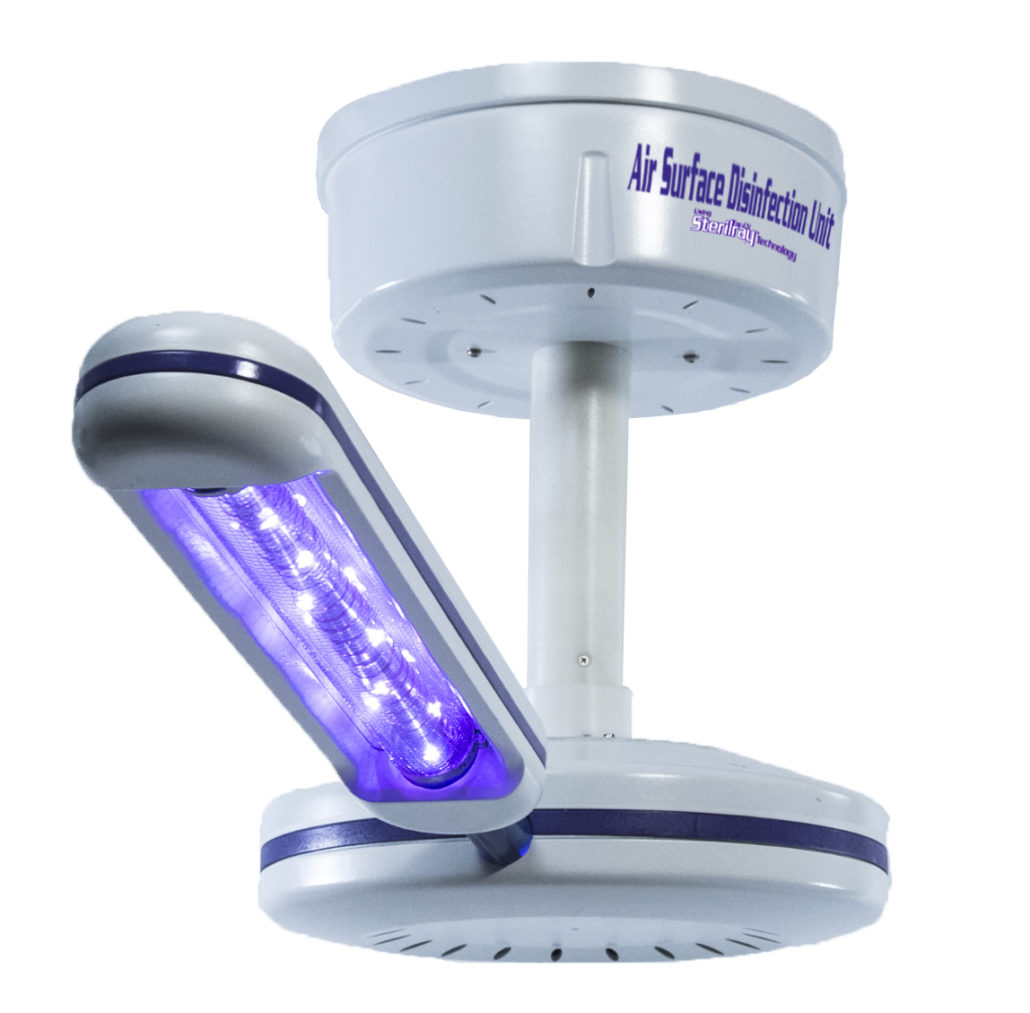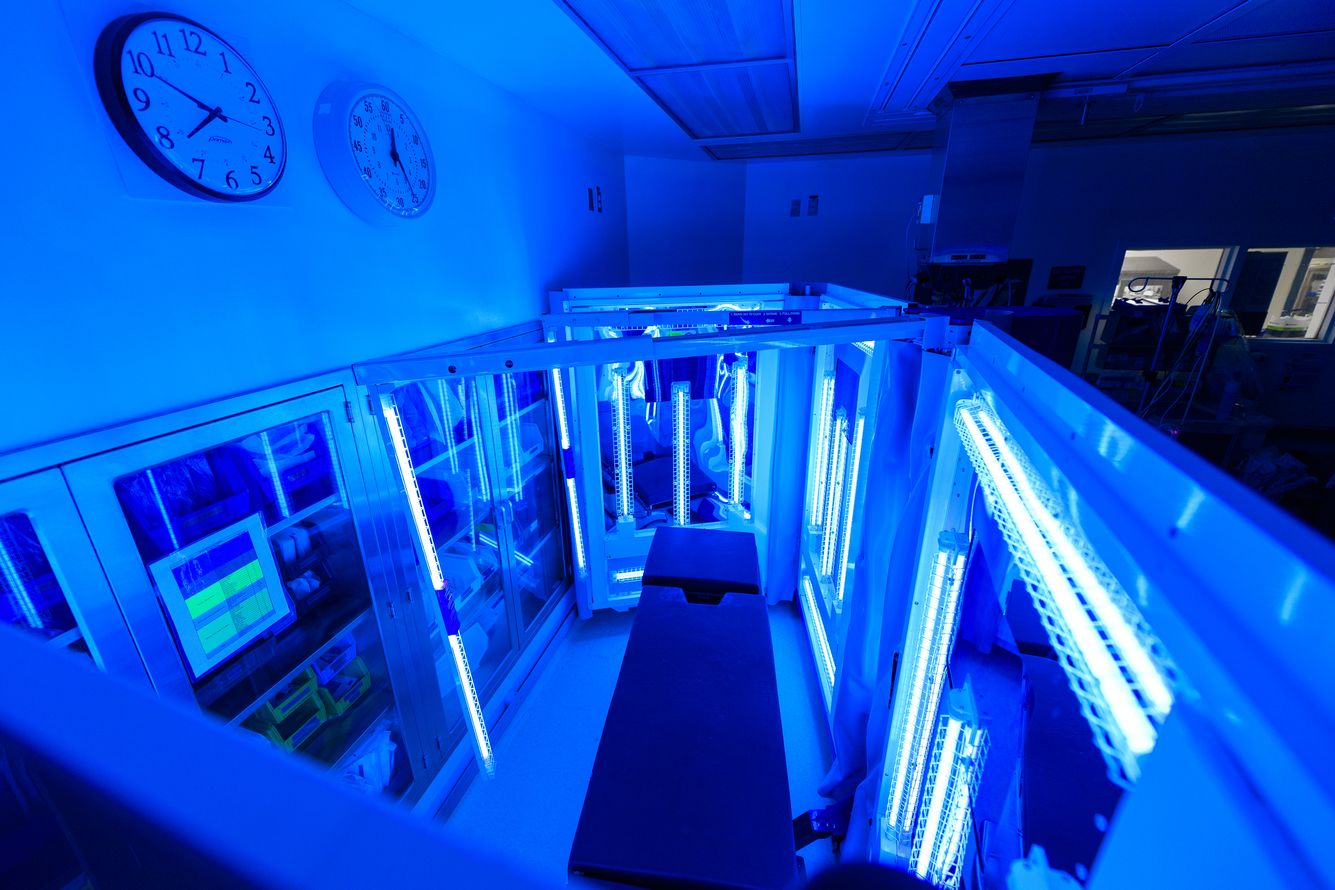Elevate Your Cleanliness Specifications with Advanced UV Surface Disinfection Innovation
Elevate Your Cleanliness Specifications with Advanced UV Surface Disinfection Innovation
Blog Article
UV Disinfection: The Cutting-Edge Modern Technology Changing Cleanliness Practices
In the world of sanitation methods, one technology has actually emerged as a game-changer: UV disinfection. From health care settings to food processing, UV disinfection is making its mark in different sectors.
Just How UV Sanitation Functions
UV sanitation works by utilizing ultraviolet light to damage or inactivate microbes, supplying a chemical-free and very effective technique of hygiene. This innovation harnesses the power of short-wavelength UV-C light, which can harming the DNA and RNA of bacteria, thus making them not able to replicate and trigger harm.
The procedure starts with the installment of UV disinfection systems, which include UV lamps that discharge UV-C light. These lamps are tactically positioned in areas where microbial contamination is a worry, such as water therapy plants, medical facilities, research laboratories, and food processing facilities.
When microbes are exposed to UV-C light, the photons permeate their cell walls and get to the DNA and RNA inside. The high-energy UV-C photons interfere with the hereditary product by creating bonds in between nearby nucleotides, bring about the development of thymine dimers. These dimers avoid the bacteria from reproducing, rendering them harmless.
UV disinfection is very reliable versus a vast array of microbes, consisting of parasites, viruses, and microorganisms. It is specifically effective versus waterborne microorganisms like E. coli, Giardia, and Cryptosporidium. Moreover, UV sanitation is a chemical-free technique, removing the need for possibly damaging disinfectants and lowering the threat of harmful disinfection by-products.
Benefits of UV Sanitation
UV disinfection provides numerous advantages in the area of hygiene, making it an extremely preferred approach for properly eliminating unsafe microbes. Unlike conventional sanitation techniques that count on chemicals, UV sanitation makes use of ultraviolet light to damage the DNA of microbes, rendering them not able to duplicate and create infections.

UV disinfection is additionally highly flexible in its applications. It can be used in various settings, consisting of healthcare facilities, colleges, food handling centers, and water therapy plants. UV disinfection systems can be quickly integrated into existing hygiene techniques, giving an added layer of defense versus transmittable conditions.
Along with its performance and versatility, UV disinfection is likewise environmentally pleasant. It does not produce any type of harmful by-products or residues, making it a sustainable and risk-free method for cleanliness - uv surface disinfection. UV sanitation requires marginal upkeep and has a long lifespan, resulting in price financial savings in the long run.
UV Disinfection in Health Care Setups
In health care setups, UV sanitation has actually become a cutting-edge method for efficiently eliminating dangerous microbes. The use of UV light to sanitize surface areas and devices has actually gotten popularity as a result of its capability to offer an extra layer of security against pathogens. UV disinfection functions by discharging ultraviolet light at a particular wavelength that is deadly to bacteria, infections, and other microorganisms. This modern technology uses numerous advantages in medical care settings.
First of all, UV sanitation is a non-chemical approach, making it an eco-friendly alternative compared to typical disinfection approaches that usually entail the usage read the article of extreme chemicals. The use of UV light eliminates the demand for chemical anti-bacterials, decreasing the risk of unsafe residue or chemical exposure to both patients and health care employees.
Furthermore, UV disinfection is highly reliable in eliminating a vast array of microorganisms, including drug-resistant microorganisms such as MRSA and C. difficile. It gives a trustworthy and regular sanitation procedure, making sure that all surface areas and tools are thoroughly disinfected, even in hard-to-reach areas.

UV Sanitation in Food Handling
The application of UV disinfection extends beyond medical care setups and discovers considerable value in the realm of food processing. uv surface disinfection. UV sanitation modern technology is becoming progressively popular in the food sector because of its capability to effectively eliminate hazardous pathogens and boost food security
Among the major advantages of UV disinfection in food handling is its ability to target a large variety of microbes, including molds, germs, and infections. By utilizing UV light at certain wavelengths, it is possible to disrupt the DNA and RNA of these pathogens, providing them unable to create or recreate injury. This modern technology can be used to numerous stages of the food handling chain, including surface area sanitation, tools sterilization, and water treatment.
UV disinfection provides a non-thermal and chemical-free technique of disinfecting food. Unlike standard sanitation techniques that count on chemicals or warmth, UV innovation does not leave any residue or alter the preference, structure, or nutritional worth of the food. This makes it a perfect service for industries that need strict adherence to high quality criteria.
Moreover, UV sanitation systems are simple to run and install, needing marginal upkeep. They can be incorporated right into existing processing lines without creating substantial disruptions to the production procedure. In addition, UV systems have a fast therapy time, enabling constant handling and decreasing downtime.
The Future of UV Sanitation

One location where UV sanitation is anticipated to make considerable advancements is in the field of health care. With the increase of antibiotic-resistant microorganisms and the need for much more efficient sanitation methods, UV light has the potential to play a critical duty in reducing healthcare-associated infections. UV disinfection systems can be used to decontaminate surfaces, tools, and even the air in medical care facilities, assisting to stop the spread of dangerous pathogens and enhance client safety and security.
One more market that can gain from innovations in UV disinfection modern technology is the food sector. UV light has currently confirmed to be an effective approach for sanitizing foodstuff and lowering the threat of foodborne diseases. As innovation enhances, we can expect to see extra cost-efficient and efficient UV disinfection systems being implemented in food processing plants, ensuring that the food we eat is risk-free and cost-free from harmful bacteria.
Final Thought
In final thought, UV disinfection is a cutting-edge innovation that is transforming cleanliness methods in healthcare settings and food processing. By making use of UV light to kill or shut down microorganisms, it provides many benefits such as effectiveness, performance, and safety. With ongoing innovations in this field, UV sanitation holds wonderful possible for the future of sanitation, offering a sustainable and trusted option for keeping tidy and hygienic atmospheres.
UV sanitation is a chemical-free method, getting rid of the demand for possibly hazardous disinfectants and check this decreasing the danger of hazardous disinfection spin-offs.
Unlike conventional sanitation methods that rely on chemicals, UV disinfection makes use of ultraviolet light to destroy the DNA of microorganisms, making them not able to reproduce and create infections. Unlike traditional sanitation techniques that count on chemicals or warmth, UV innovation does not leave any type of residue or change the taste, structure, or nutritional value of the food. As innovation enhances, we can anticipate to see more efficient and cost-efficient UV disinfection systems being implemented in food processing plants, making certain that the food we eat is safe and free from unsafe microorganisms.
In verdict, UV disinfection is an innovative modern technology that is changing hygiene methods in health care setups and food processing.
Report this page